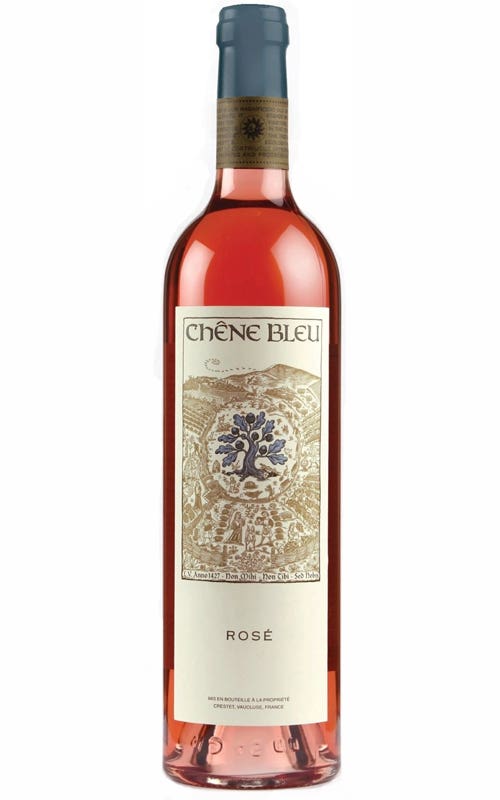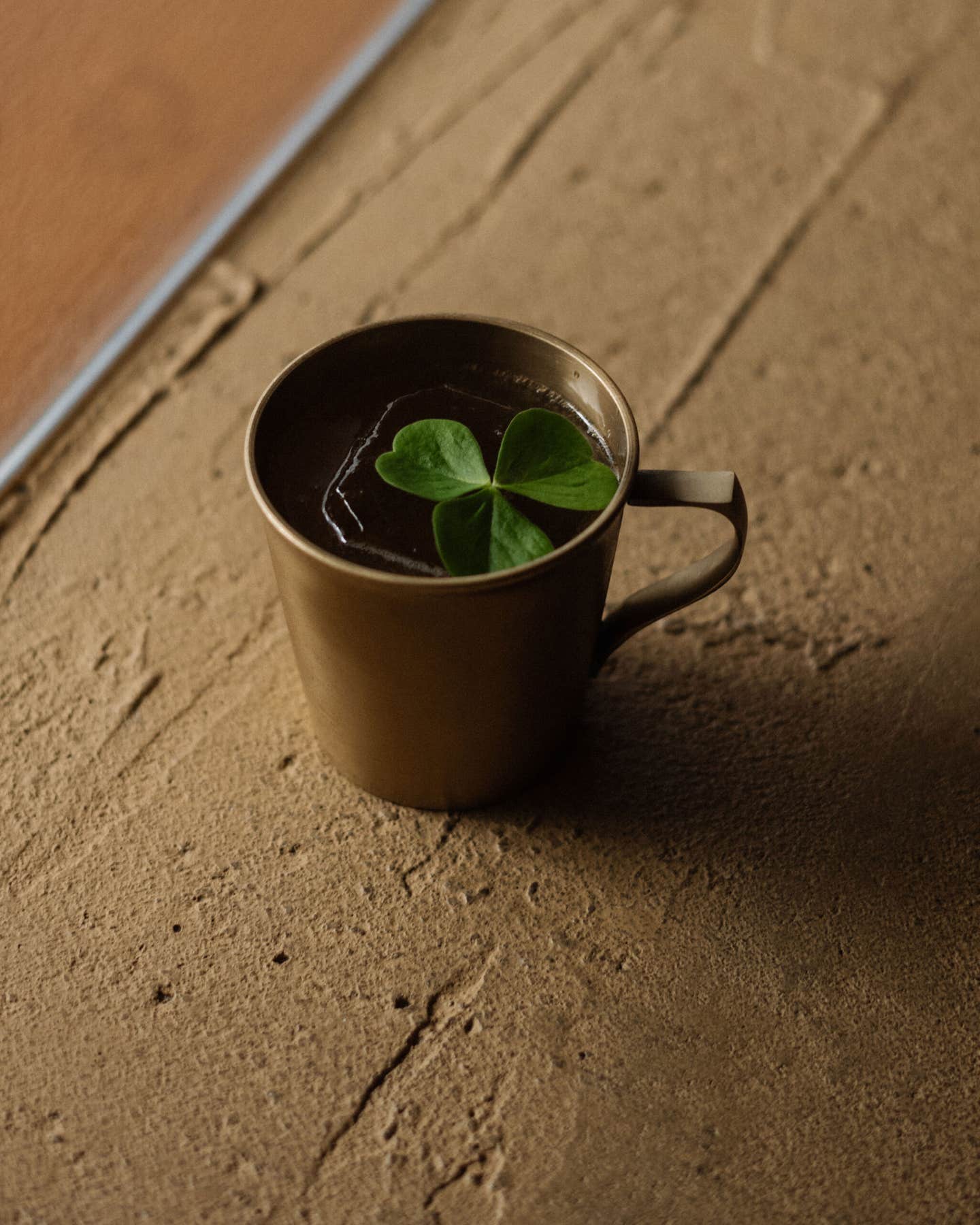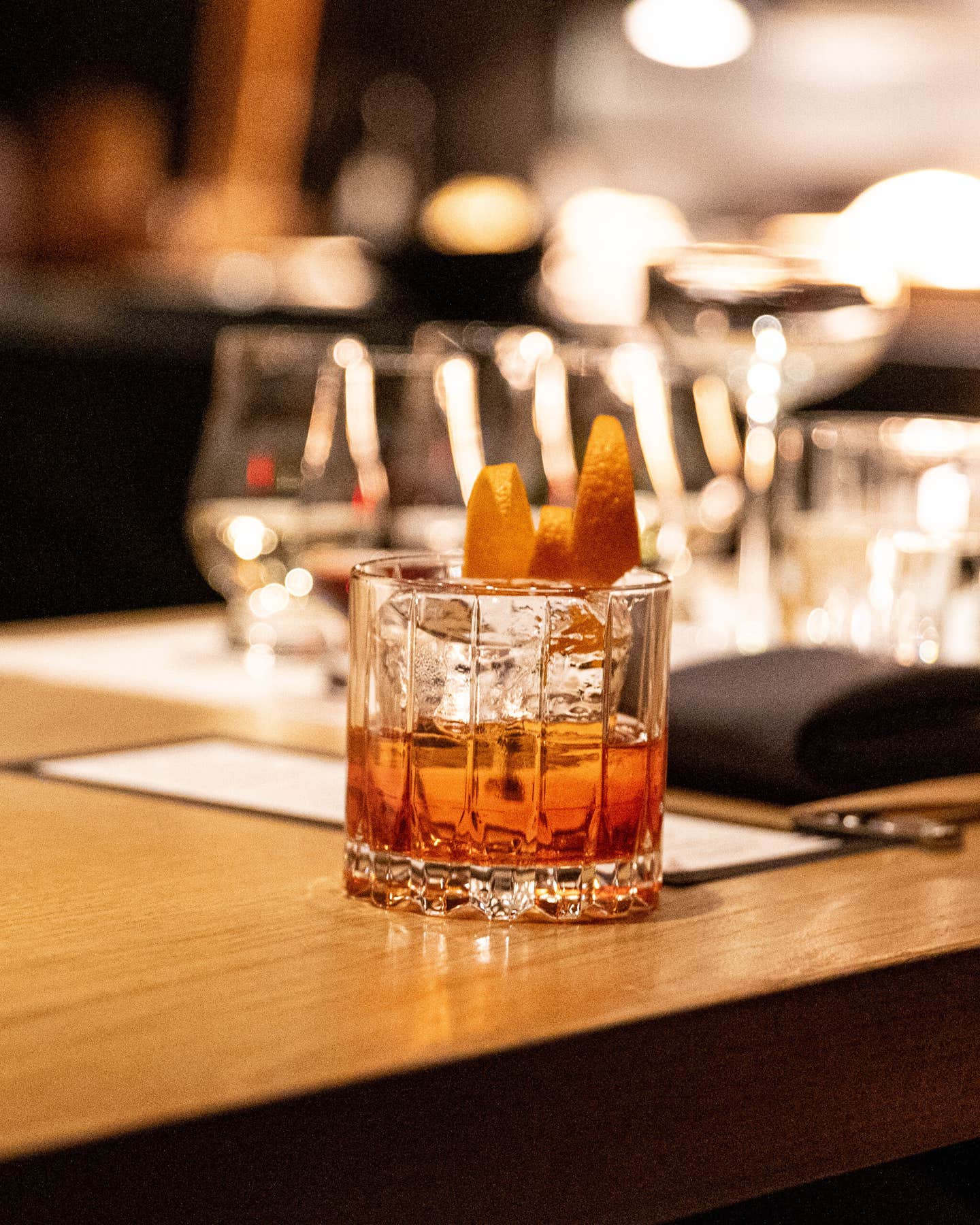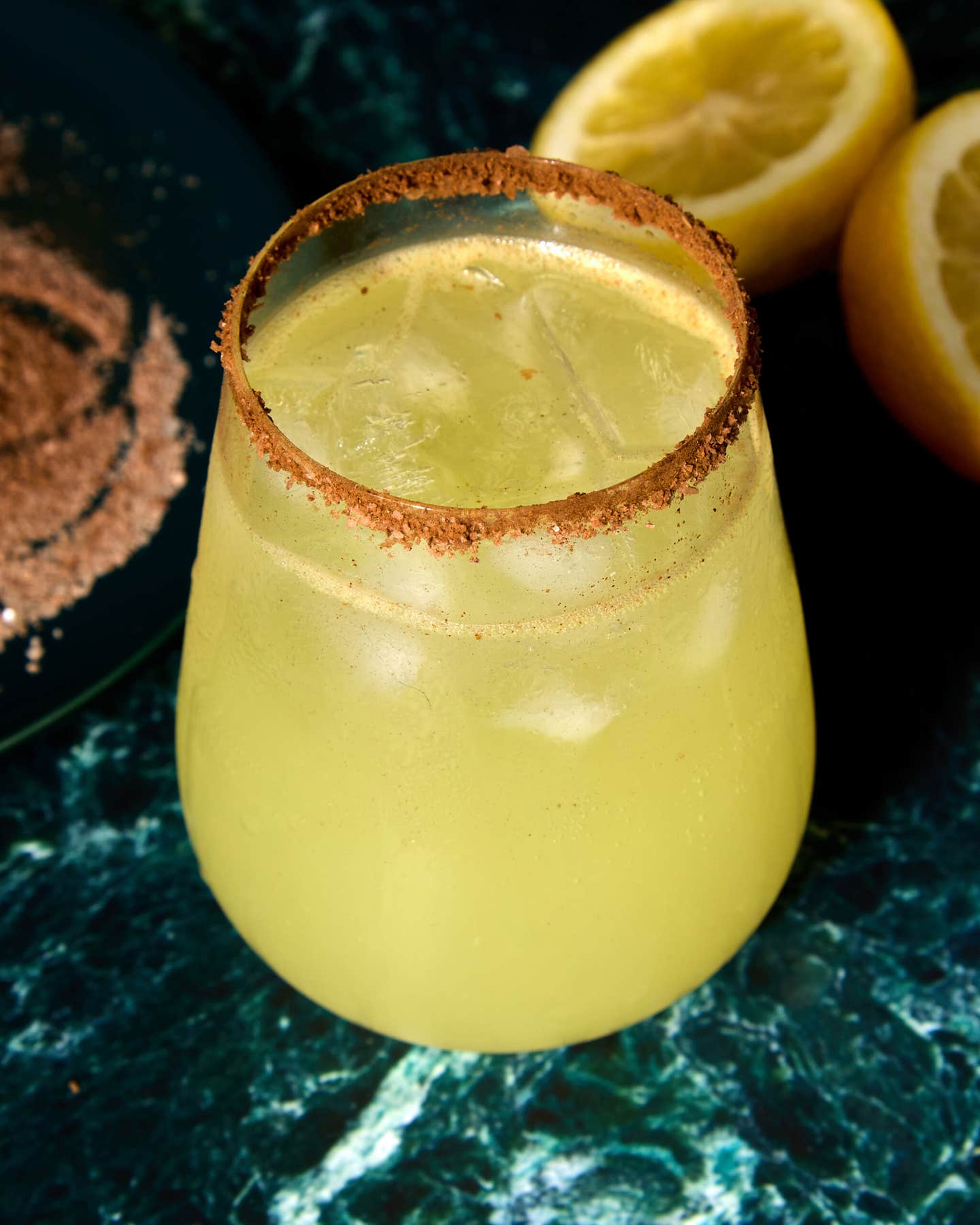
Drink this Now: Chêne Bleu Rosé
Full-bodied, tart, and rich, this is a rosé worth drinking in autumn
It was a gorgeous day in early summer when I visited the small wine producer Chêne Bleu, based on the edge of the southern Rhône and the Côteaux de Provence in the south of France. Getting to the winery at La Verrière, located atop a mountain amongst the trees of the Dentelles de Montmirail, is easier said than done: Our GPS couldn’t find the address, so we had to do it the old-fashioned way, winding along narrow roads above the town of Crestet, eyes open for small signs and roadside markers, praying we were going in the right direction as we passed by forests and hiking trails until we finally came upon the beautifully restored ninth-century estate, high above the Rhône river valley.
The estate is owned by the Roulot family, who have committed many years of work to revitalizing grape production and researching the climate, vines, and soils of their vineyards as they rehabilitated the property. Because La Verrière is located so high above the surrounding alluvial plains, the vines must penetrate down through layers of chalk and clay for nourishment—back down that same hill I’d just driven up—putting the vines through intense stress and thus increasing the concentration of flavor in the grapes. The altitude also deeply affects the transformation of the grapes: The vines are subject to the extreme temperature variations that come with such a high location, the bright southern sun reaching them through air that is at turns both cooler and warmer than the valley below.
Chêne Bleu released their first vintage in 2006, and the wines they’ve been producing ever since—a small but focused selection of one rosé, one white, and three reds—are the result of all the research and time spent cultivating the vines and understanding their environment. Tasting through each of the tightly edited selection of concentrated, rich wines, I was deeply impressed by their unique styles: They were clearly similar to wines of the regions that surround them—from the full-bodied, earthy reds of the northern Rhône to the fruit-forward yet hefty palate-pleasers of the southern Rhône—while at the same time quite different from their typical characteristics, with a rosé that contrasted greatly from its crisp, supremely drinkable but less complex compatriots from Provence.
But of all the wines I tasted on that visit, it’s the rosé I keep coming back to, with its layered complexity and apparent ability for aging, given its fuller body and high acidity, both results of the sun, altitude, and strain of its terroir. Its crisp nose has a distinct spine of redcurrant, and while it keeps some of that tart berry on the palate, it also introduces the richness of ripe red raspberry fruit, and a lovely round finish touched with acidity. Unlike most Provençal roses, once pressed, the grapes are given time on their skins, and a percentage is aged in oak, creating higher tannins and a unique interplay of textures and tastes that leave a weightier feeling in your mouth.
Their 2012 rosé seems designed expressly in opposition to its summery counterparts, to be drunk as it warms from chilled to room temperature, with food, in any season. Rich and structured, yet not overwhelming on the palate, it was delicious with the fresh goat cheese and tapenade I tasted back in June, but it's also ready to stand up to the heartier foods of autumn, such as chicken with roasted vegetables or even a pâté, especially if, like me, you're not quite ready to let go of those little hints of the summer life. It's the perfect wine for transitioning into fall.
TO TASTE
_ The 2012 Chêne Bleu rosé, about $38 at retail, is now available in all states, through national importer Wilson Daniels_
TO STAY
_ La Verrière
Available for rent by room or for the entire house
Chemin de La Verrière, Crestet, France
33-4/90-10-06-30_
Keep Reading
Continue to Next Story










